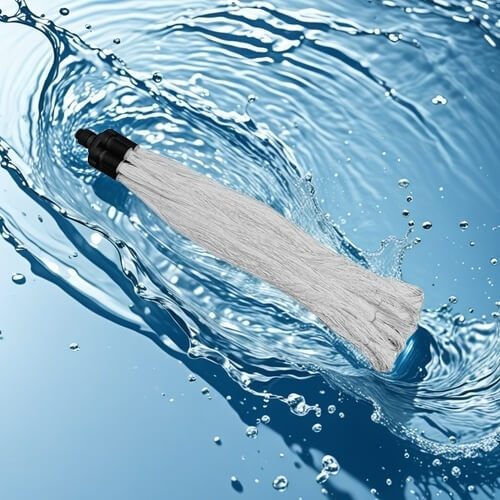Complete Analysis of Lithium Battery Wastewater Treatment Process
In today’s era where lithium batteries are widely used and the industry is thriving, the treatment of lithium battery wastewater has become an urgent and highly challenging issue that requires attention. Properly handling lithium battery wastewater is not only a necessary requirement for fulfilling environmental protection responsibilities, but also an important cornerstone for promoting the sustainable and healthy development of the lithium battery industry. This article will delve into the characteristics of lithium battery wastewater and elaborate on various effective treatment processes.
1、 Sources and characteristics of lithium battery wastewater
The production process of lithium batteries involves multiple stages, such as electrode material preparation, cell assembly, electrolyte injection, and cleaning, each of which generates varying degrees of wastewater. These wastewater components are complex and diverse, containing a large amount of heavy metal ions such as lithium (Li), cobalt (Co), nickel (Ni), manganese (Mn), etc., which are key components of lithium battery electrode materials; At the same time, it is also accompanied by pollutants such as organic solvents, fluorides, and ammonia nitrogen. Among them, heavy metal ions are toxic and difficult to degrade. If discharged directly without effective treatment, they will cause long-term and serious damage to soil, water bodies, and ecological environment, threatening human health and ecological balance. In addition, the presence of organic solvents and fluorides also increases the difficulty and complexity of wastewater treatment.
2、 Lithium battery wastewater treatment process
(1) Chemical precipitation method
Chemical precipitation is one of the commonly used methods for treating heavy metal ions in lithium battery wastewater. The principle is to add a specific chemical precipitant to the wastewater, causing heavy metal ions to react chemically with the precipitant, generating insoluble precipitates, which are then removed from the wastewater through precipitation separation. For example, lime (Ca (OH) ₂), sodium hydroxide (NaOH), or sulfides can be used as precipitants. Taking lime as an example, it can adjust the pH value of wastewater and promote the precipitation of heavy metals such as cobalt and nickel into hydroxides. However, this method has some limitations, such as generating a large amount of sludge, and subsequent sludge treatment not only requires additional site and equipment, but also involves disposal costs and environmental risks.

(2) Ion exchange method
The ion exchange method utilizes the special function of ion exchange resin to selectively adsorb heavy metal ions in wastewater. Ion exchange resins contain specific functional groups that can undergo ion exchange reactions with heavy metal ions in wastewater, thereby achieving the removal of heavy metals. This method has a high removal efficiency for heavy metals and can to some extent achieve the recycling and utilization of valuable metals, with dual economic and environmental benefits. However, the procurement cost of ion exchange resin is relatively high, and regular regeneration treatment is required during use to maintain its adsorption performance, which undoubtedly increases the operating cost and operational complexity of the entire treatment process.
(3) Membrane separation method
Membrane separation technology has demonstrated unique advantages in the field of lithium battery wastewater treatment, mainly including reverse osmosis (RO), ultrafiltration (UF), and nanofiltration (NF). Reverse osmosis membranes can effectively block the majority of ions and small molecules in wastewater, thereby obtaining high-purity treated water; Ultrafiltration membranes focus on removing large organic molecules and colloidal particles to prevent their impact on subsequent processing steps; Nanofiltration membranes have a certain selective separation ability for divalent and multivalent ions. Membrane separation method has significant advantages such as good separation effect and no phase change. The treated water quality is relatively stable and can meet high reuse requirements. However, membrane modules are prone to pollution and blockage by pollutants in wastewater, requiring regular cleaning and maintenance. At the same time, the investment cost and energy consumption during operation of membrane separation systems are relatively high, which to some extent limits their large-scale application.
(4) Biological treatment method
The biological treatment method mainly relies on the metabolic action of microorganisms to degrade and transform organic matter and some heavy metals in wastewater. Some specific bacteria and fungi can adsorb and transform heavy metal ions through their own metabolic activities, reducing their toxicity or transforming them into more manageable forms. In addition, the construction of artificial wetland systems or the use of biological treatment processes such as activated sludge can also be applied to the treatment of lithium battery wastewater. However, biological treatment methods are more sensitive to the toxicity of wastewater, and the complex components of lithium battery wastewater may inhibit the activity of microorganisms, thereby affecting the stability and reliability of the treatment effect. Therefore, in practical applications, it is necessary to pretreat the wastewater to reduce its toxicity, and screen and cultivate adaptable microbial communities based on the characteristics of the wastewater.
(5) Advanced oxidation method
Advanced oxidation methods such as Fenton Oxidation and Ozone Oxidation generate hydroxyl radicals (· OH) with strong oxidizing properties to oxidize and decompose organic matter and some difficult to degrade substances in wastewater, thereby improving the biodegradability of wastewater. Fenton oxidation utilizes the reaction between ferrous ions (Fe ² ⁺) and hydrogen peroxide (H ₂ O ₂) to generate hydroxyl radicals; Ozone oxidation directly utilizes the strong oxidizing properties of ozone (O3) to react with pollutants. Advanced oxidation methods have significant effects in treating recalcitrant organic pollutants, but typically require a large amount of chemical reagents and energy, resulting in high treatment costs. Moreover, some secondary pollutants may be generated during the reaction process, which require further treatment and control.
